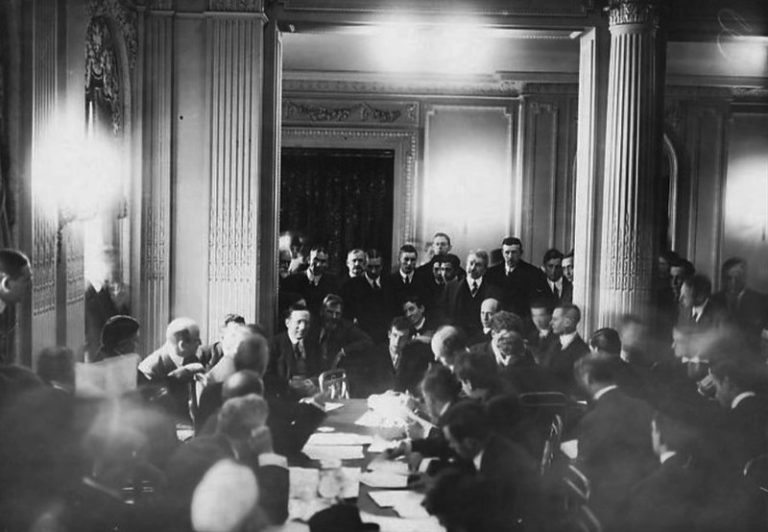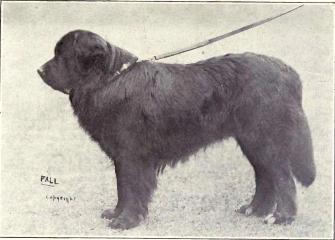"For the Rest of My Prophecy to Come True": Helen Bishop
Helen Walton was 19 years old when she married 23-year-old Dickinson Bishop. She was his second wife. When they met, he still wore a mourning band for the first wife he had just lost to childbirth.
After their wedding in November 1911, Dick and Helen took off on a lavish extended honeymoon spanning Europe and North Africa. In four months, they had visited France, Algiers, Italy, and Egypt.
Dick was besotted. And somewhere along the way, Helen fell pregnant.
Helen was overwhelmed with beautiful gifts from her new husband—he even bought her a pretty little lapdog in Florence to celebrate the pregnancy. Helen named the puppy Frou-Frou and doted on her endlessly, and Dick continued to dote on Helen.
The Bishops had read about the opulence and glittering amenities on the brand new Titanic, and Dick, beside himself with elation, suggested that they join Titanic’s maiden voyage.
The Bishops (and Frou-Frou) boarded at Cherbourg.
Helen and Dick were a particularly sociable couple; they even befriended Colonel John Jacob Astor and his very young new wife Madeleine. The Astors, affluent though they were, were having a romantic scandal and had been thusly ostracized by some of the haughtier First-Class passengers.
In fact, Helen made fast friends with Mrs. Astor, as they were of similar age and newly pregnant on their honeymoons, and all too happy to play with Frou-Frou, who Helen had been permitted to keep in her stateroom.
On the night of the sinking, Helen and Dick were alerted immediately.
“My husband awakened me at about a quarter of 12 and told me that the boat had struck something. We both dressed and went up on the deck, looked around, and could find nothing… We looked all over the deck; walked up and down a couple of times, and one of the stewards met us and laughed at us. He said, :You go back downstairs. There is nothing to be afraid of. We have only struck a little piece of ice.”
Helen testified that after this, she and her husband returned to their suite, only to be interrupted 15 minutes later by fellow passenger Albert Stewart.
“He knocked at our door some time after the disaster. This was after we had dressed, gone up deck, and gone to our beds again. Mr. Stewart said ‘Dickey-bird, you’d better come up on deck and amuse yourself,’ in a tone that warned us.”
The Bishops encountered the Astors during this second round, and Colonel Astor chased down Captain Smith, who “told him something in an undertone.” Astor returned and advised everyone to put on their lifebelts.
As the Bishops left their stateroom for the final time, Helen asked if it would be prudent to bring Frou-Frou with her. Dick assured her that this was a necessary precaution and nothing more, and that Frou-Frou would be safe to await Helen’s return. But Frou-Frou was desperate to stay with Helen.
Dick locked the stateroom as they left; Helen never saw Frou-Frou again.
“It broke my heart to leave my little dog ‘Freu-Freu’ [sic] in my stateroom… I made a little den for her in our room behind two of my suitcases, but when I started to leave her she tore my dress to bits, tugging at it. I realized, however, that there would be little sympathy for a woman carrying a dog in her arms when there were lives of women and children to be saved.”
On deck, Helen and Dick found themselves at Lifeboat 7 on the starboard side, nearby Fifth Officer Harold Lowe.
“We had no idea that it was time to get off [Titanic], but the officer took my arm and told me to be very quiet and get in immediately.”
Helen went on to assert that Dick had been pushed in after her, a story that he corroborated. Dick took his seat beside his wife and reassured her as they descended. He would be forced to grapple with this for the rest of his life.
Although she did not testify to it during the Senate Inquiry, Helen also asserted that she had heard the instruction that “all brides and grooms may board” the lifeboat, and that she and Dick were one of four couples in their boat.
Lifeboat 7 was the first to leave Titanic, and Helen Bishop is regarded as the first passenger to have boarded a lifeboat following the collision. Shortly thereafter, she was joined in the boat by movie actress Dorothy Gibson.
The lifeboat was noticeably under-populated, and once some distance had been gained between it and Titanic, a headcount was taken; Helen testified to a total of 28 people in Lifeboat 7.
There were no officers in the lifeboat, and only a trio of crewmen. The passengers therefore took turns in rowing the boat, including Helen, pregnant though she was. An exception was made for a fraudulent German baron who elected to sit rowing out and have a smoke instead.
Helen’s account of the sinking itself was brief, but heartbreaking.
“For a moment, the ship seemed to be pointing straight down, looking like a gigantic whale submerging itself headfirst… a veritable wave of humanity surged up out of the steerage and shut the lights from our view. we were too far away to see the passengers individually, but we could see the black masses of human forms and hear their death cries and groans.”
Helen also removed her wool stockings to give to a small girl who hadn’t had sufficient time to dress for the cold.
Because Lifeboat 7 was the first to launch, its passengers also spent the most time adrift in the dark with nothing but “ghastly… green lights, the kind you burn on the Fourth of July” that a steward had brought on the boat.
According to Helen, “Whenever we would light one of these diminutive torches, we would hear the cries from the people perishing aboard. They thought it was help coming.” And so, the occupants of Lifeboat 7 became increasingly concerned about being swarmed and overturned by desperate survivors.
As her fellow passengers became more paranoid, Helen attempted to placate them with a fun anecdote.
Helen said that while she and Dick were in Egypt, she visited a fortune teller who informed her that she would survive a shipwreck and an earthquake, but a motor vehicle accident would take her life. Therefore, she assured everyone, they would absolutely survive the night.
“We have to be rescued,” she said, “in order for the rest of my prophecy to come true.”
Helen and Dick did survive, of course. Although Dick's reputation did not. Like other male survivors, he was harangued for his cowardice, and was also accused of dressing like a woman in order to board a lifeboat.
Both Mr. and Mrs. Bishop were also called before the Senate Inquiry.
Helen gave birth to their son in December of 1912, but the infant died only two days later.
Helen and Dick took a holiday to California in the springtime of 1913 in an effort to distract themselves from their bereavement.
But an earthquake disrupted their holiday.
Helen was newly distraught. Two-thirds of the prophecy had now happened; despite Dick’s reassurance, she was terrified of the third and final act: a fatal car crash.
In November of 1914, Helen was on her way home from a country club dance with a group a friends. The car spun out while taking a curve and crashed into a tree. Helen was thrown 25 feet from the vehicle and fractured her skull.
She survived, despite expectations. But she did have a metal plate installed in her skull.
Her personality subsequently changed, and her marriage to Dick deteriorated because of it. They divorced less than two years later, in January of 1916.
Only two months later, Helen fell on a rug and struck her head near the location of the metal plate. Unconscious, she suffered a cerebral hemorrhage and died within days, on March 16, 1916.
Helen’s obituary appeared on the front page of her hometown’s daily newspaper, right alongside the wedding announcement of Dick and his third wife.
Helen Walton Bishop was 23 years old.













